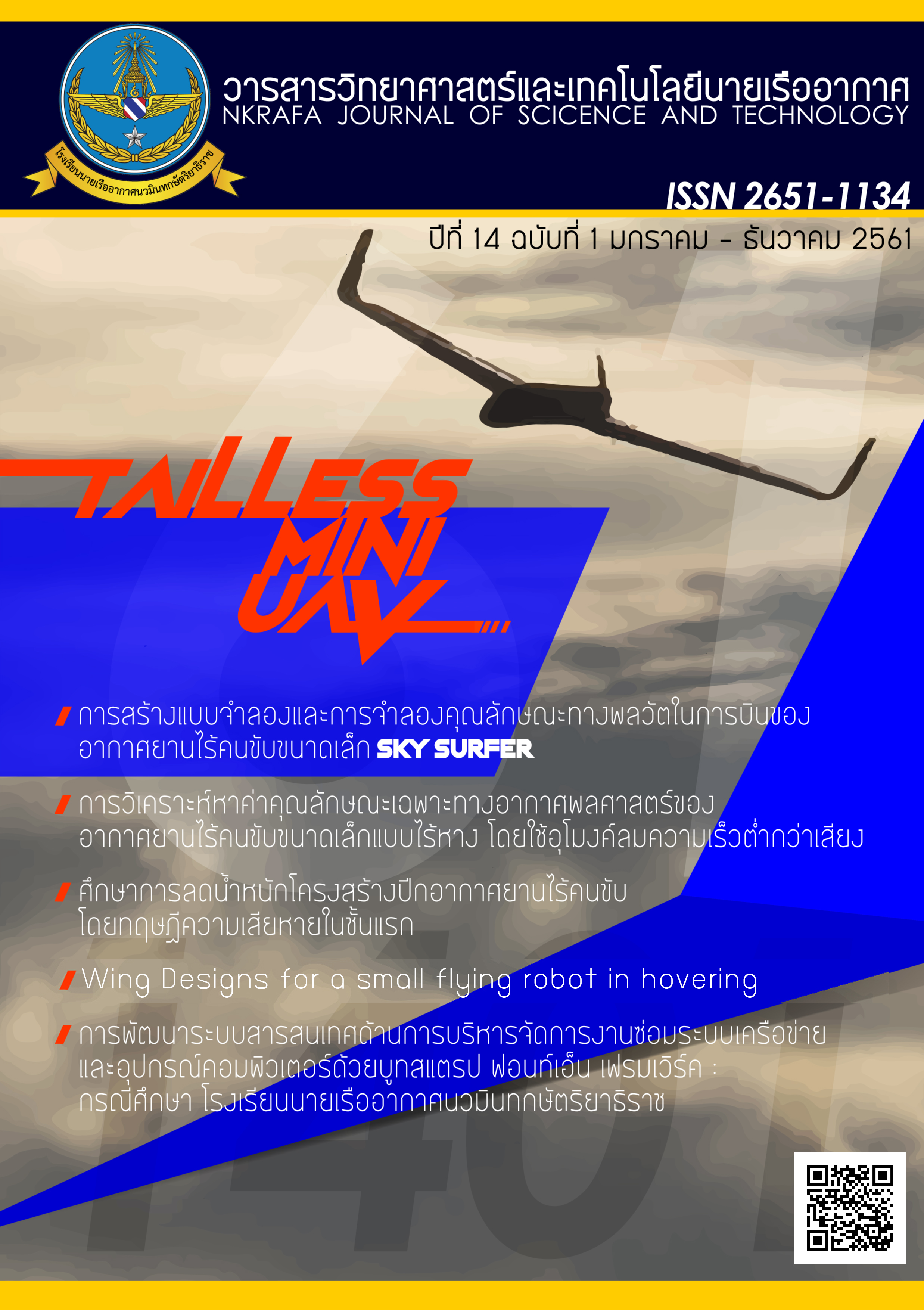การวิเคราะห์แบบจำลองสมการโครงสร้างของการใช้น้ำมันแก๊สโซฮอล์ 95 ในรถจักรยานยนต์
Main Article Content
บทคัดย่อ
การวิจัยนี้มีวัตถุประสงค์เพื่อวิเคราะห์ปัจจัยที่ส่งผลต่อการใช้น้ำมันแก๊สโซฮอล์ 95 ในรถจักรยานยนต์ กลุ่มตัวอย่างที่ใช้คือ ผู้ขับขี่รถจักรยานยนต์ที่ใช้น้ำมันแก๊สโซฮอล์ 95 ในเขตอำเภอเมือง จังหวัดนครราชสีมา จำนวน 510 คน ทำการวิเคราะห์ข้อมูลด้วยเทคนิคการวิเคราะห์แบบจำลองสมการโครงสร้าง ผลการวิจัยพบว่า แบบจำลองสมการโครงสร้างสุดท้ายของการใช้น้ำมันแก๊สโซฮอล์ 95 ในรถจักรยานยนต์มีความสอดคล้องกลมกลืนกับข้อมูลเชิงประจักษ์ ปัจจัยที่ส่งผลต่อการใช้น้ำมันแก๊สโซฮอล์ 95 ในรถจักรยานยนต์ประกอบด้วย 7 ปัจจัย เรียงลำดับจากสูงสุดไปต่ำสุดได้ดังนี้ ปัจจัยด้านข้อมูลข่าวสาร ปัจจัยด้านสถานีบริการน้ำมัน ปัจจัยด้านความพึงพอใจ ปัจจัยด้านการประเมินผลทางเลือก ปัจจัยด้านการตัดสินใจซื้อ ปัจจัยด้านราคา และปัจจัยด้านการประชาสัมพันธ์ โดยปัจจัยทั้งเจ็ดส่งผลกระทบทางตรงเชิงบวกต่อการใช้น้ำมันแก๊สโซฮอล์ 95 ในรถจักรยานยนต์และสามารถอธิบายความแปรปรวนของการใช้น้ำมันแก๊สโซฮอล์ 95 ในรถจักรยานยนต์ได้ร้อยละ 86.5
Article Details
- เนื้อหาและข้อมูลในบทความที่ตีพิมพ์ในวารสารวิทยาศาสตร์และเทคโนโลยีนายเรืออากาศ ถือเป็นข้อคิดเห็นและความรับผิดชอบของผู้เขียนบทความโดยตรง กองบรรณาธิการวารสาร ไม่จำเป็นต้องเห็นด้วย หรือร่วมรับผิดชอบใด ๆ
- บทความ ข้อมูล เนื้อหา รูปภาพ ฯลฯ ที่ได้รับการตีพิมพ์ในวารสารวิทยาศาสตร์และเทคโนโลยีนายเรืออากาศถือเป็นลิขสิทธิ์ของวารสารวิทยาศาสตร์และเทคโนโลยีนายเรืออากาศ หากบุคคลหรือหน่วยงานใดต้องการนำทั้งหมดหรือส่วนหนึ่งส่วนใดไปเผยแพร่ หรือเพื่อกระทำการใด ๆ จะต้องได้รับอนุญาตเป็นลายลักอักษรณ์จากวารสารวิทยาศาสตร์และเทคโนโลยีนายเรืออากาศ ก่อนเท่านั้น
References
[2] Ministry of Energy, Department of Alternative Energy Development and Efficiency. (2016). Final Energy Consumption by Economic Sector. Retrieved March 25, 2017, from http://www.dede. go.th/download/state_59/200358_consumtion.pdf
[3] Ministry of Energy, Department of Alternative Energy Development and Efficiency. (2016). Final Energy Consumption. Retrieved March 25, 2017, from http://www.dede.go.th/ewt_news.php?nid=42079
[4] Ministry of Energy, Energy Policy and Planning Office. (2017). Commercial Primary Energy Import. Retrieved March 25, 2017, from http://www.workactually.co.th/eppostat2017.html
[5] Ministry of Energy, Energy Policy and Planning Office. (n.d.). Bioenergy. Retrieved March 25, 2017, from http://www.eppo.go.th/royal/m1700_0020.html
[6] National Statistical Office. (n.d.). Sales Energy by Type of Fuel Year: 2007–2016. Retrieved March 25, 2017, from http://statbbi.nso.go.th/ staticreport/Page/sector/TH/report/sector_13_12_TH_.mht
[7] Department of Land Transport. (2017). Number of Vehicle Registered as of February 28, 2017. Retrieved April 2, 2017, from https://data.go.th/ DatasetDetail.aspx?id=0affb243-e426-4b95-9eb3 -ae578bfbcd34
[8] Ministry of Energy, Department of Energy Business. (2015). Oil Plan 2015–2036. Retrieved March 26, 2017, from http://www.eppo.go.th/ images/POLICY/PDF/oil_ plan58-79.pdf
[9] Tongdechasamart J., Vongchavalitkul S., and Khodphan M. (2018). Factor Analysis of Using Biofuels for Motorcycle. In Proceedings of the 4th National Research Conference Northern College (210–214). Tak: Northern College.
[10] Boomsma, A. (1985). Nonconvergence, Improper Solutions, and Starting Values in LISREL Maximum Likelihood Estimation. Journal Psychometrika, 50(2): 229–242.
[11] Kline, R.B. (1998). Principles and Practice of Structural Equation Modelling. 3rd Ed. New York: Guilford Press.
[12] Loehlin, J.C. (1998). Latent Variable Models: An Introduction to Factor, Path, and Structural Analysis. New Jersey: Lawrence Erlbaum Associates.
[13] Nunnally, J.C. (1967). Psychometric Theory. New York: McGraw-Hill.
[14] Bentler, P.M. & Chou, C.H. (1987). Practical Issues in Structural Modeling. Journal of Sociological Methods & Research, 16: 78–117.
[15] Bollen, K.A. (1989). Structural Equations with Latent Variables. New York: John Wiley.
[16] Hair, J.F., Black, W.C., Babin, B.J., & Anderson, R.E. (2010). Multivariate Data Analysis. 7th Ed. New Jersey: Pearson Prentice-Hall International Inc.
[17] Schumacher, R.G., & Lomax, R.G. (2010). Beginner’s Guide to Structural Equation Modeling. 3rd Ed. New York: Routledge.
[18] Kotler, P. (2002). Marketing Management Millenium Edition. Boston: Pearson Custom Publishing.
[19] Serirat, S. (2007). Consumer Behavior. Bangkok: Theera film & Scitex.
[20] Lertharn, K. (2009). Factors Influencing a Transition from Mainstream Energy to Alternative Energy: A Case Study of Gasohol Technology for Passenger Cars in Bangkok. (Master Dissertation, Thammasat University).
[21] Putsom, W. (2011). A Study of Alternative Forms of Energy Consuming Behavior of the Car Owner in Saraburi. University of the Thai Chamber of Commerce Journal, 31(2): 38–52.
[22] Chakatit, A. (2013). The Marketing Factors Effecting Truck Buyer’s Loyalty in the Southern Bordered Provincial Cluster. (Doctoral Dissertation, Christian University of Thailand).
[23] Kuwatanavanit, A. (2013). The Comparison Study of Selecting Behavior of Using Alternative Fuel of Private Vehicles: Between NGV and LPG in Phra Nakhon Si Ayutthaya Province. In Bangkok University Research Conference(478-485). Bangkok: Bangkok University.
[24] Wachirakomen, P. & Ativetin, T. (2015). Cognitive, Innovation Adoption Process, Attitudes and Behaviors toward Gasohol Fuel of Drivers in Bangkok. Srinakharinwirot Business Journal, 6(1): 39-52.
[25] Lilarungrot, N. (2016). The Study is about the Factors Affecting the Behaviors of Selecting NGV for Personal Car’s Engine in Nakhon Pathom Province. Sripatum Chonburi Journal, 12(6): 176-182.
[26] Vanichbuncha, K. (2014). Structural Equation Modeling (SEM) by AMOS. 2nd Ed. Bangkok: Three Lada.
[27] Kovacic, N., Topolsek, D., & Dragan, D. (2015). Tourism Sector, Travel Agencies, and Transport Suppliers: Comparison of Different Estimators in the Structural Equation Modeling. Journal of Logistics & Sustainable Transport, 6(1): 11-24.
[28] Mueller, R.O. (1996). Basic Principles of Structural Equation Modeling. New York: Springer-Verlag.
[29] Ma, Z., Pi, G., Dong, X., & Chen, C. (2017). The Situation Analysis of Shale Gas Development in China-Based on Structural Equation Modeling. Renewable and Sustainable Energy Reviews, 67: 1300-1307.
[30] Mai, L.W., & Ness, M.R. (2006). A Structural Equation Model of Customer Satisfaction and Future Purchase of Mail-Order Speciality Food. International Journal of Business Science and Applied Management, 1(1): 1-13.
[31] Doloi, H., Iyer, K.C., & Sawhney, A. (2011). Structural Equation Model for Assessing Impacts of Contractor’s Performance on Project Success. International Journal of Project Management, 29(6): 687-695.
[32] Doloi, H., Sawhney, A., & Iyer, K.C. (2012). Structural Equation Model for Investigating Factors Affecting Delay in Indian Construction Projects. Construction Management and Economics, 30(10): 869-884.
[33] Ab Hamid, M.R., Sami, W., & Mohmad Sidek, M.H. (2017). Discriminant Validity Assessment: Use of Fornell & Larcker Criterion Versus HTMT Criterion. Journal of Physics: Conference Series 890.
[34] Santos Neto, A.S., Dantas, M.J.P., & Machado, R.L. (2017). Structural Equation Modeling Applied to Assess Industrial Engineering Students’ Satisfaction According to ENADE 2011. Production, 27(spe).
[35] Curran, P.J., West, S.G., & Finch, J.H. (1996). The Robustness of Test Statistics to Nonnormality and Specification Error in Confirmatory Factor Analysis. Journal of Psychological Methods, 1(1): 16–29.
[36] Suhr, D. (2006). The Basics of Structural Equation Modeling. Presented: SAS User Group of the Western Region of the United States. Irvine: California.
[37] Hoe, S.L. (2008). Issues and Procedures in Adopting Structural Equation Modeling Technique. Journal of Applied Quantitative Methods, 3(1): 76-83.

